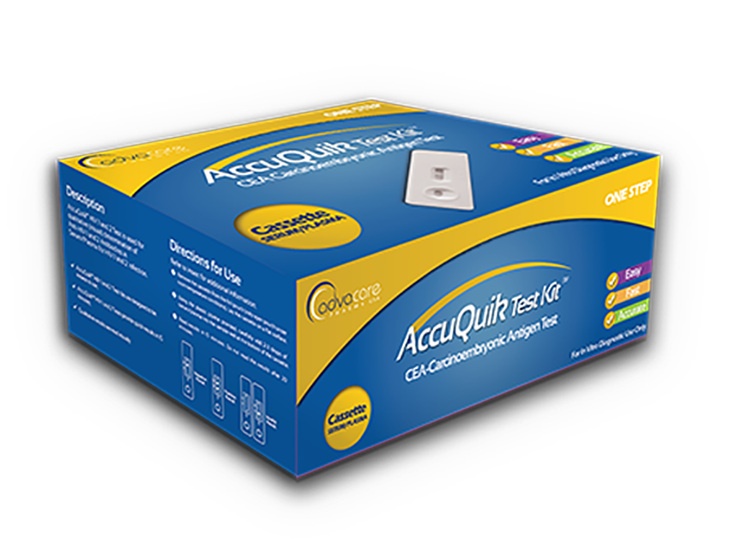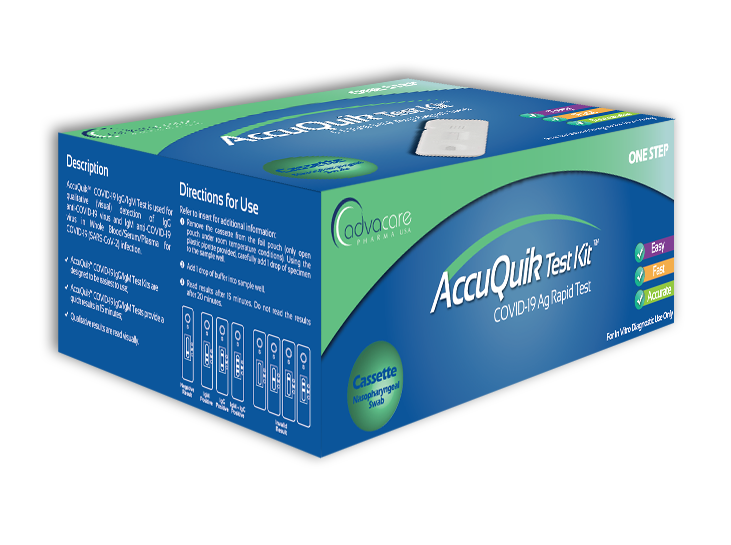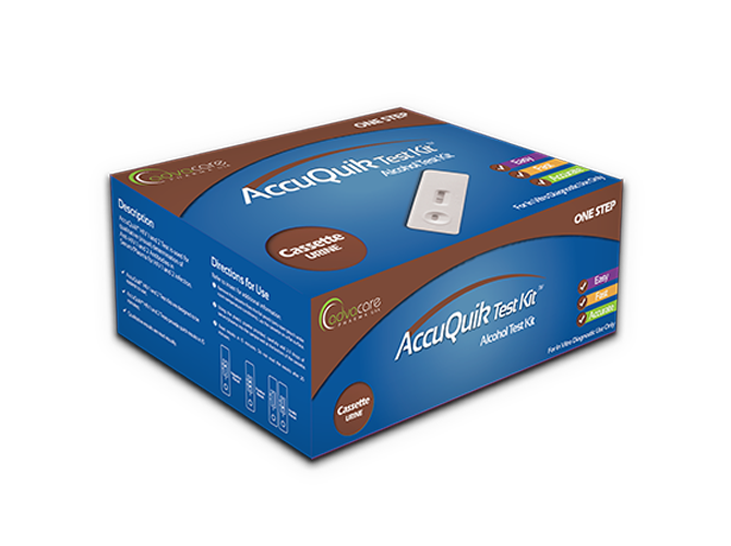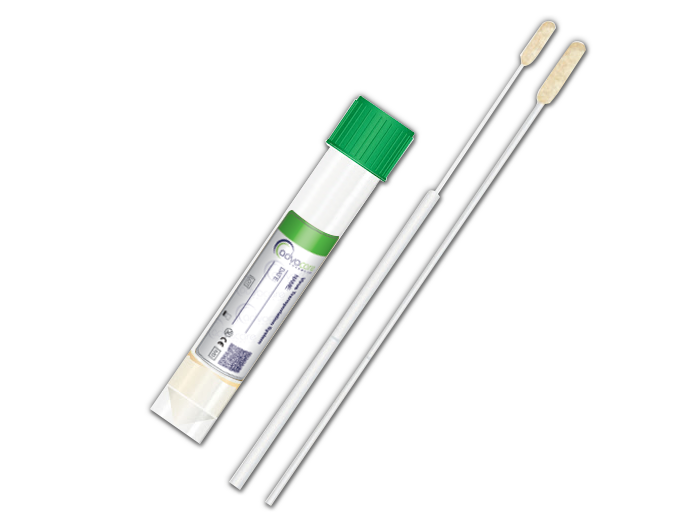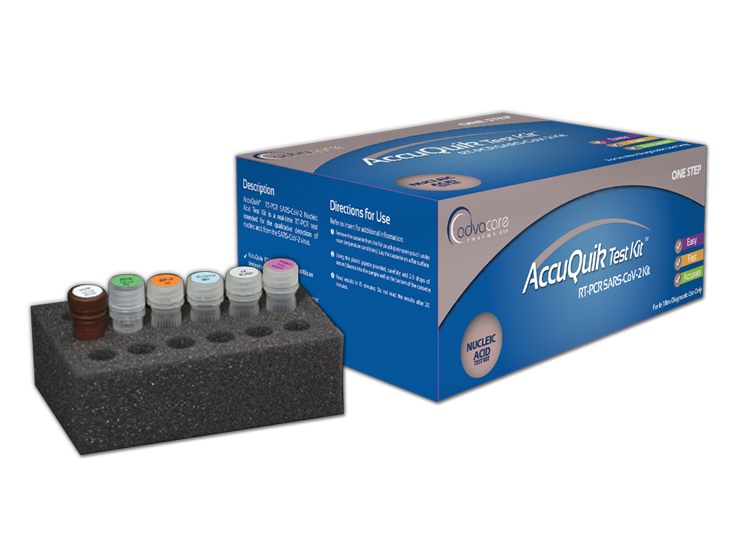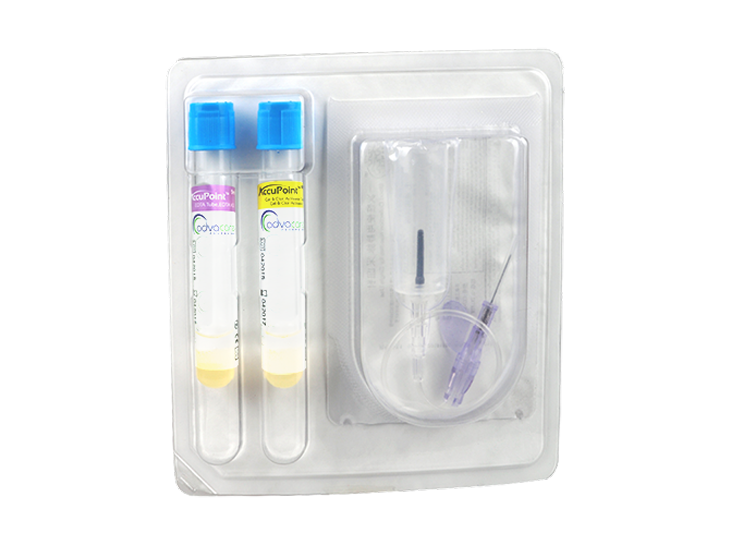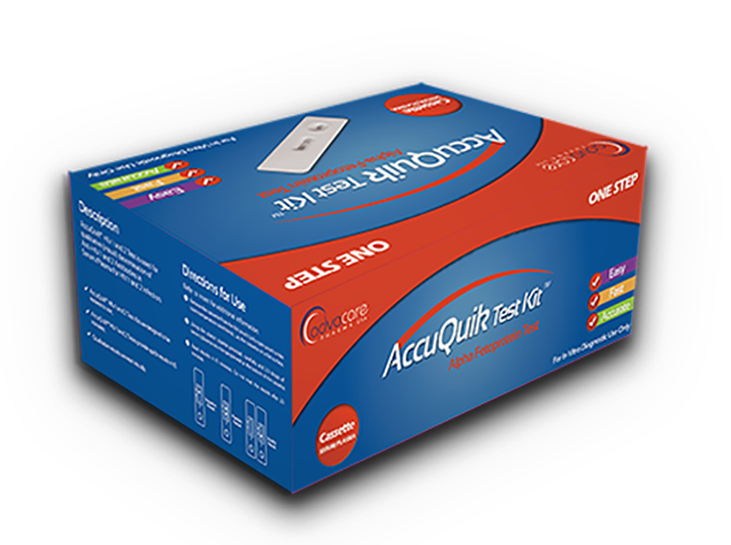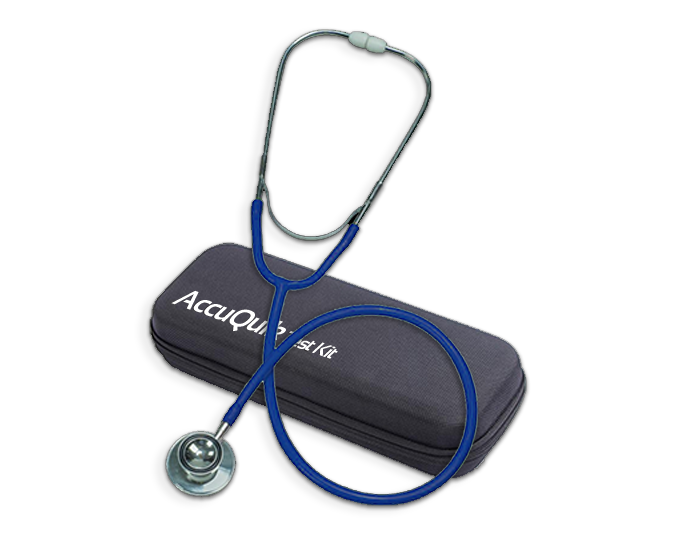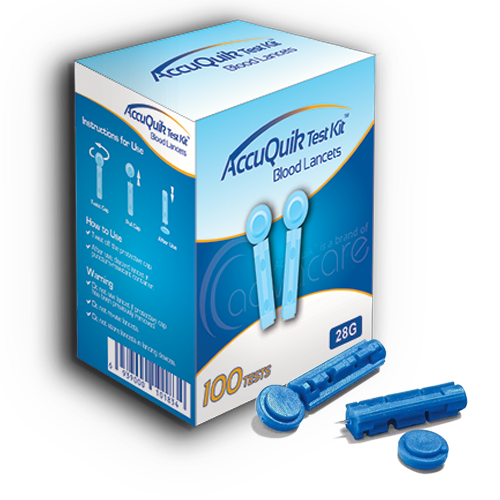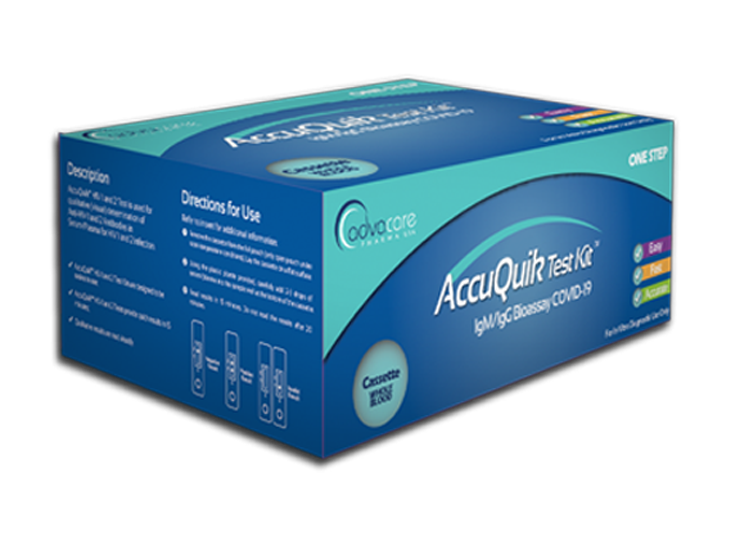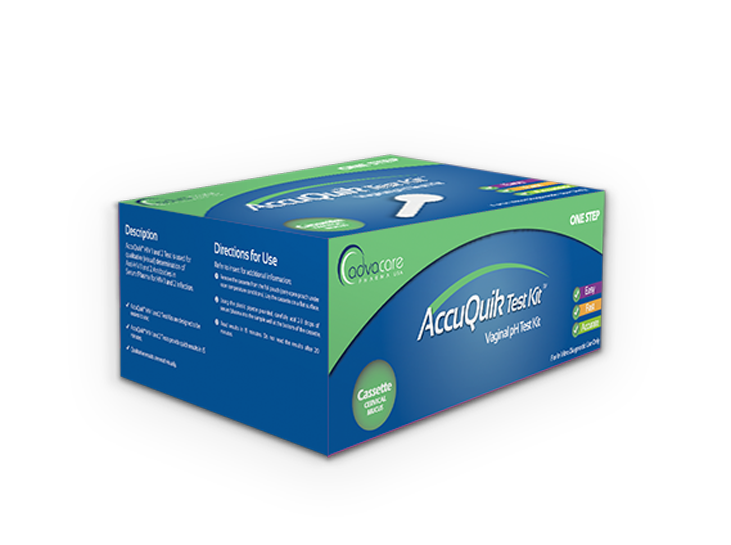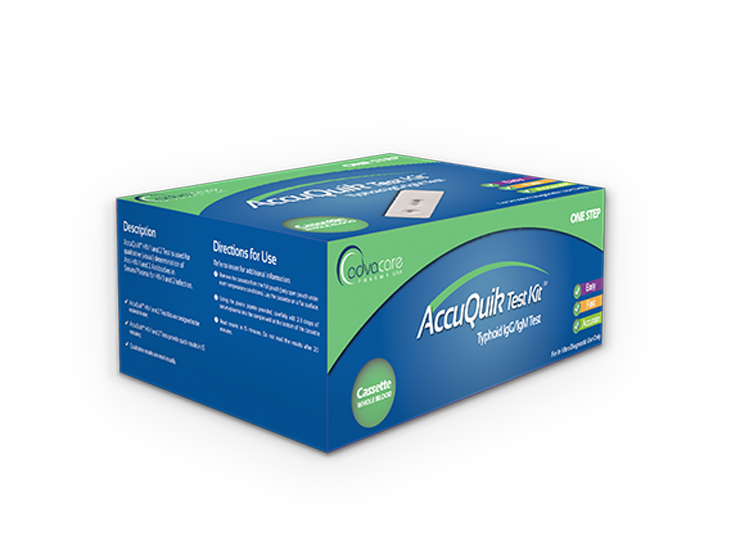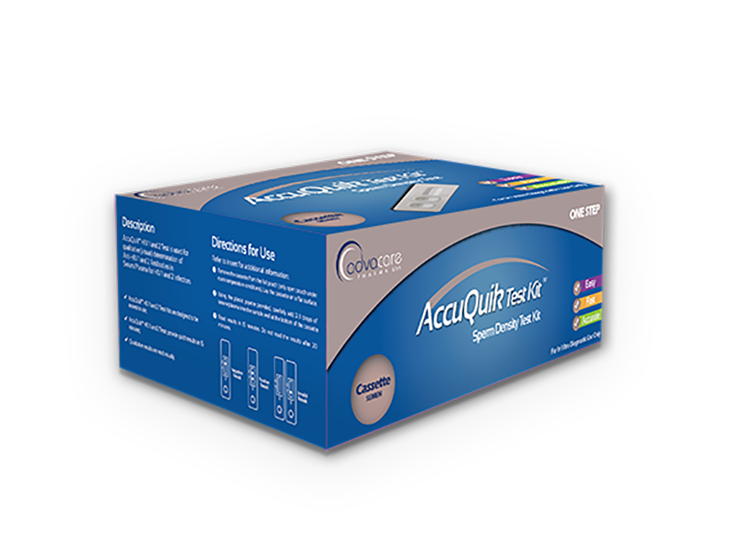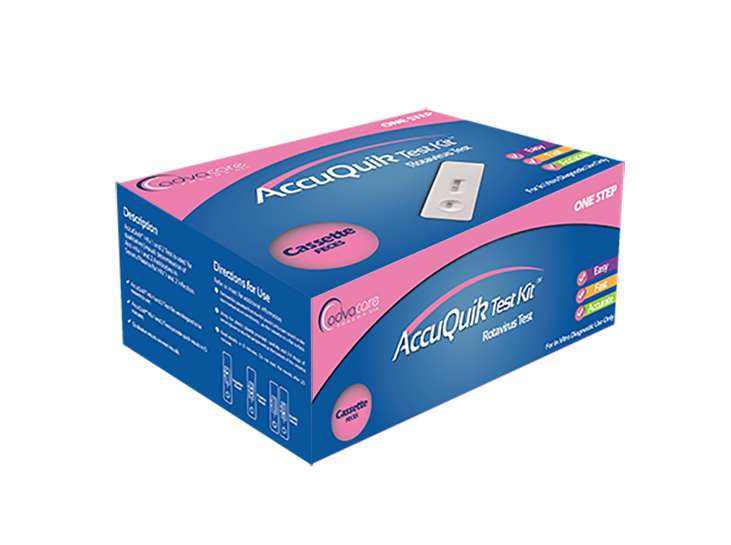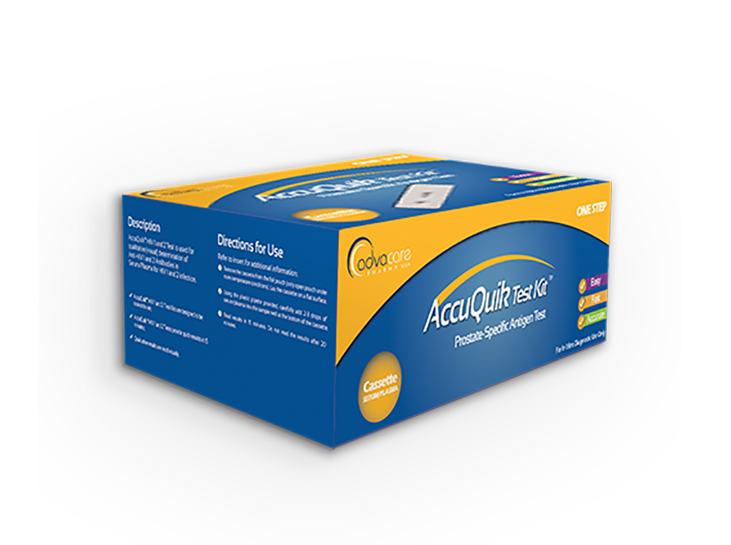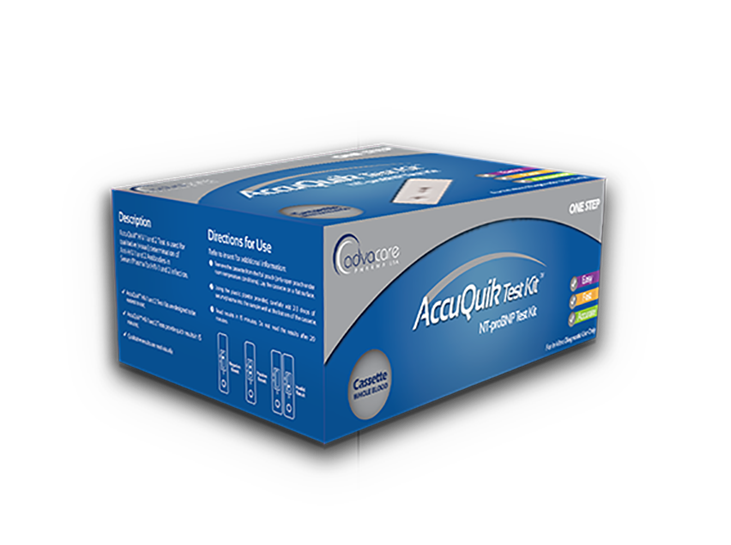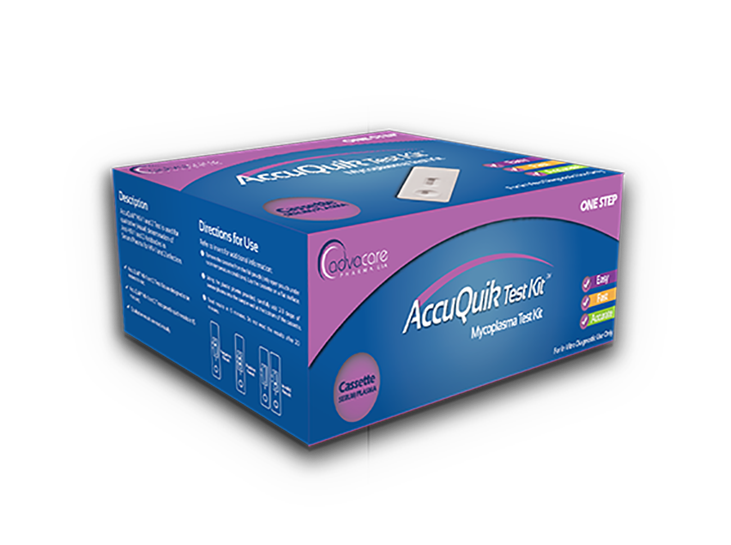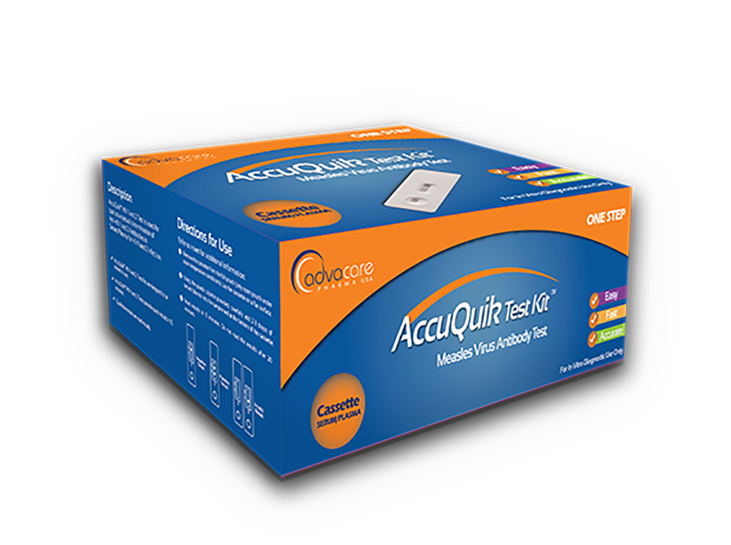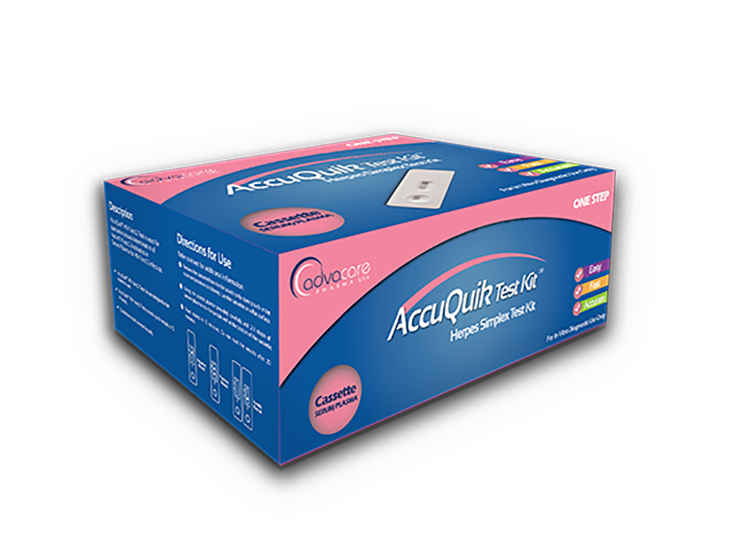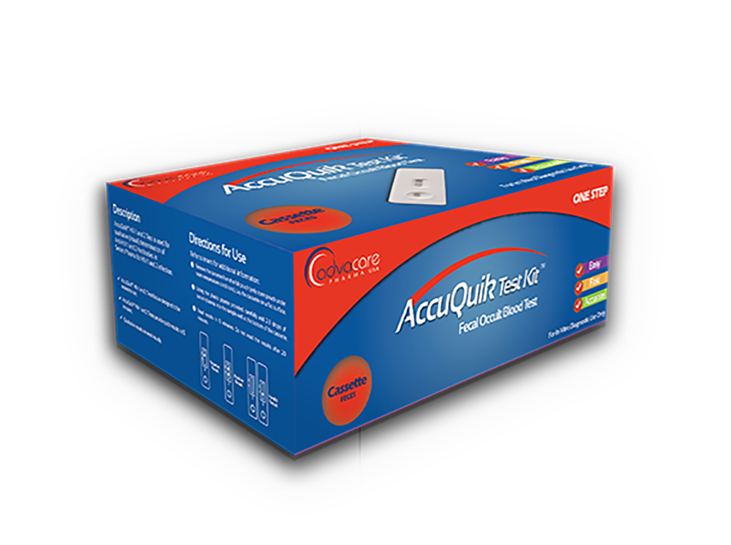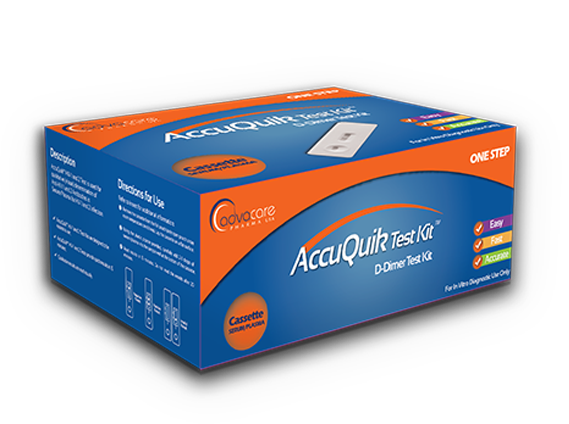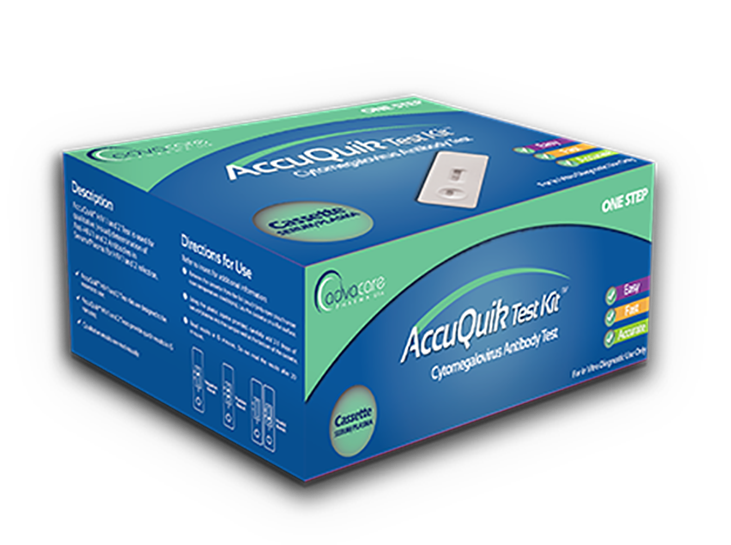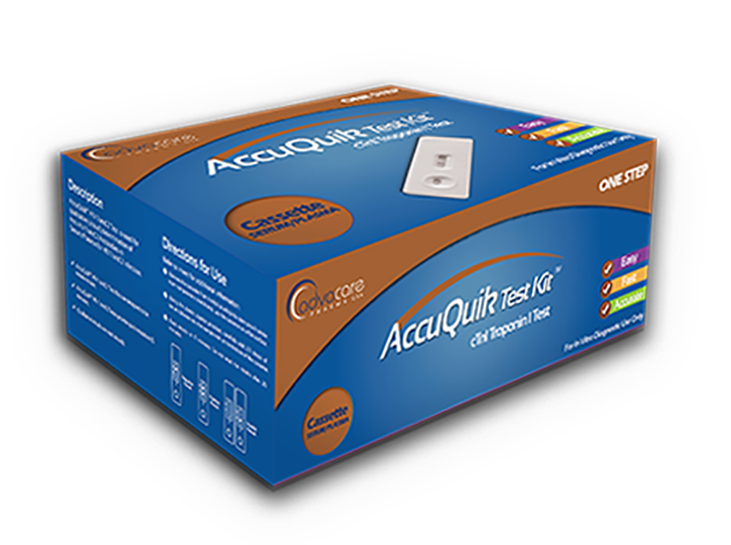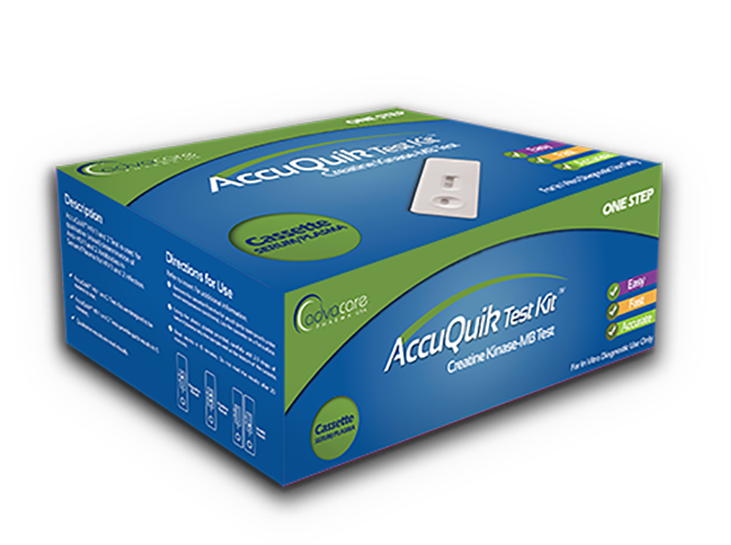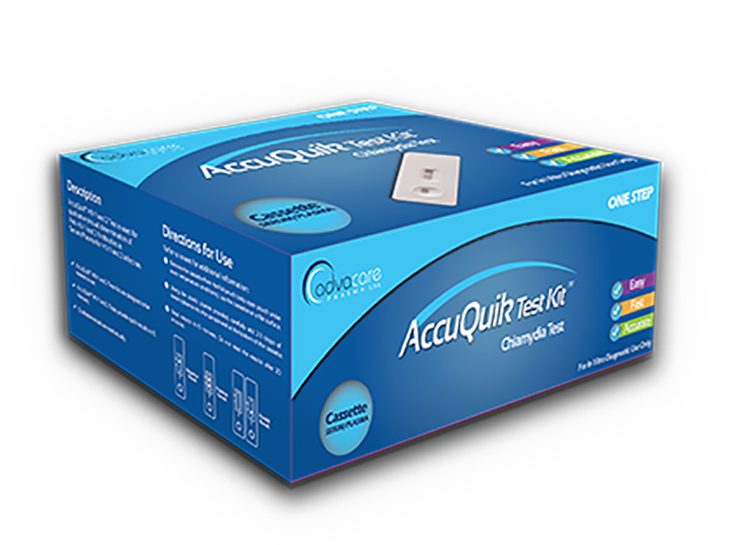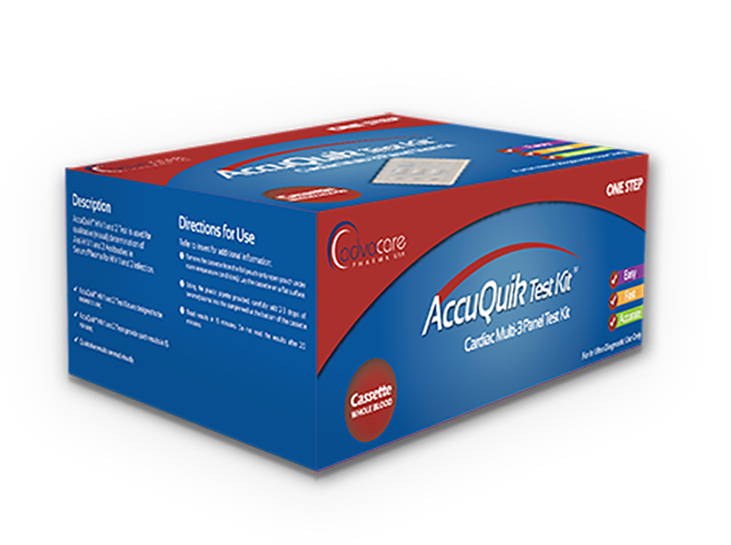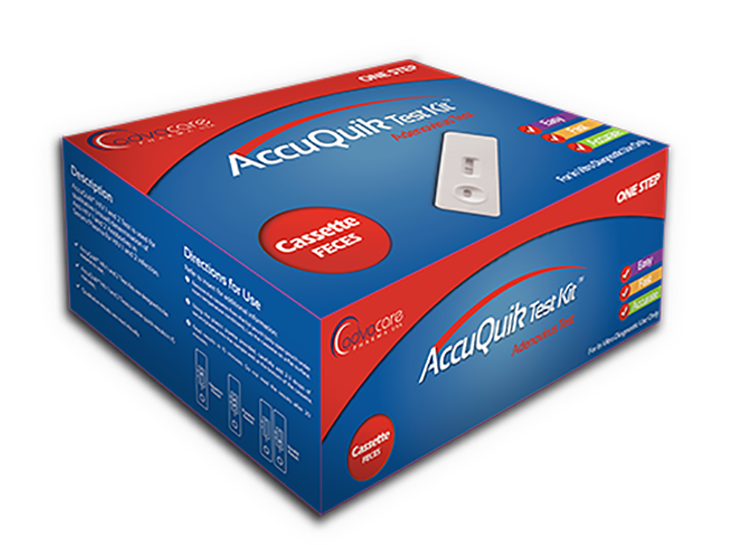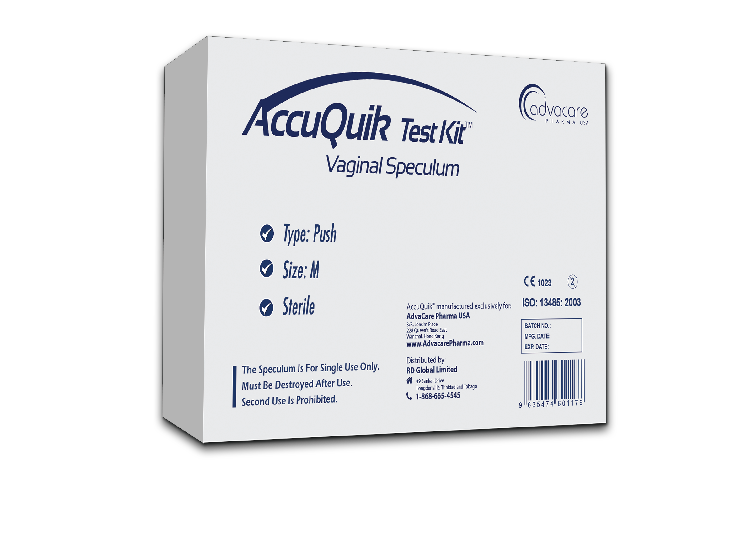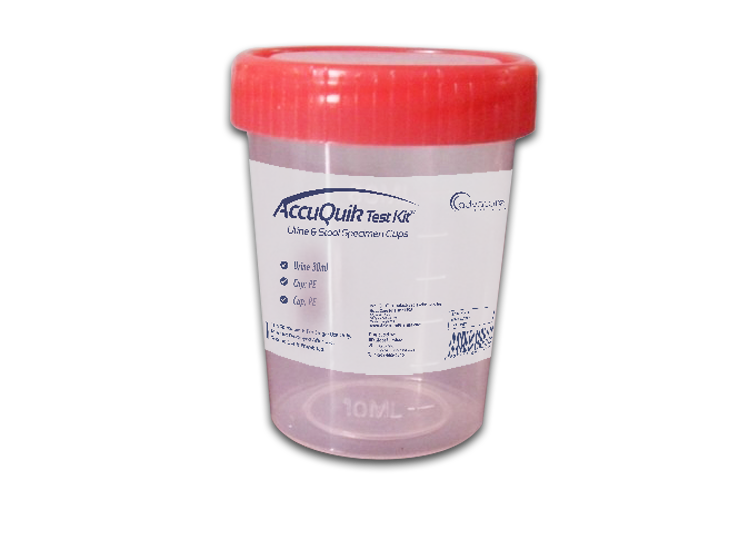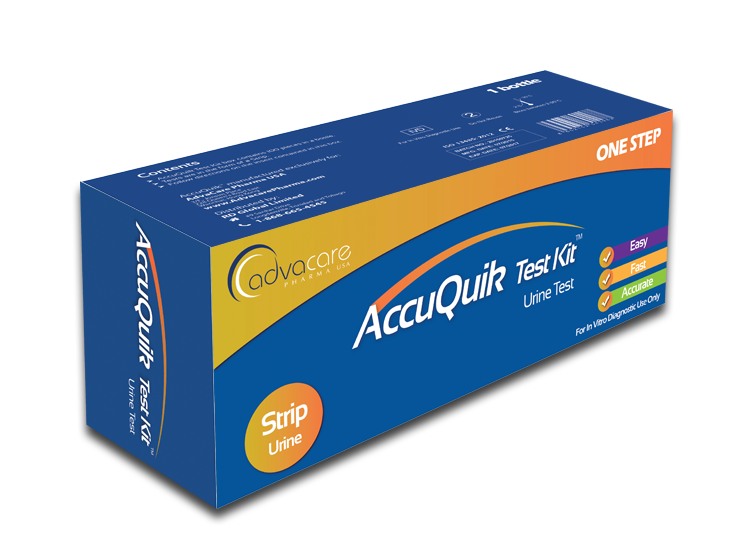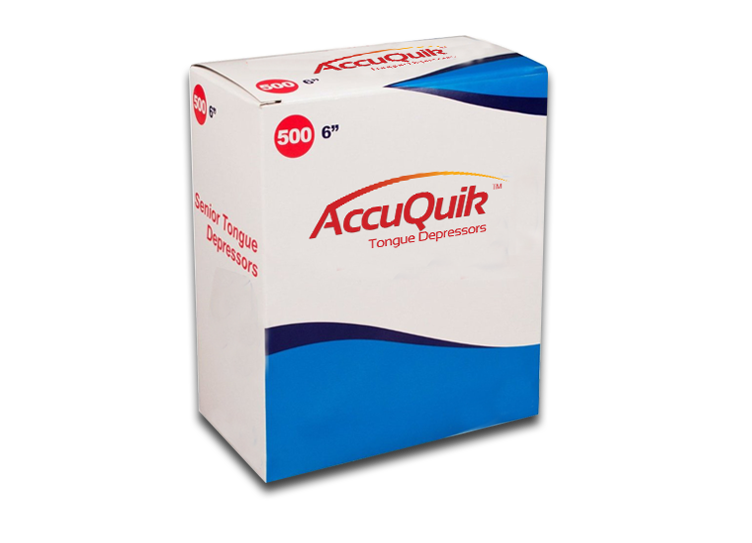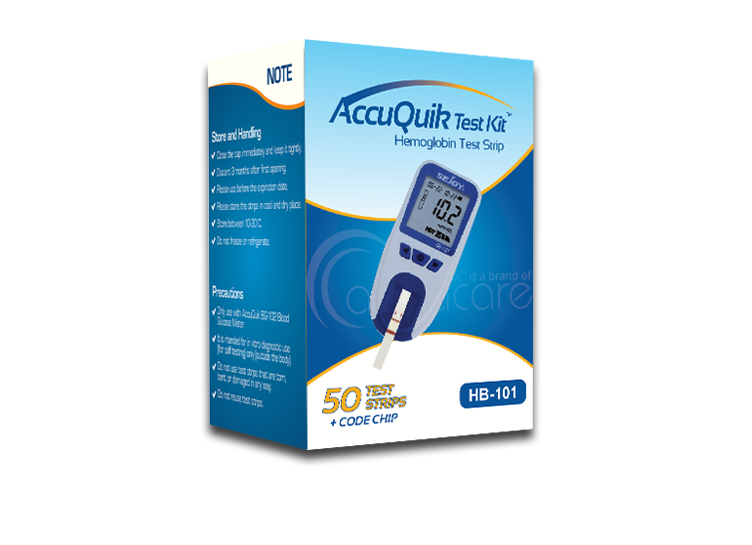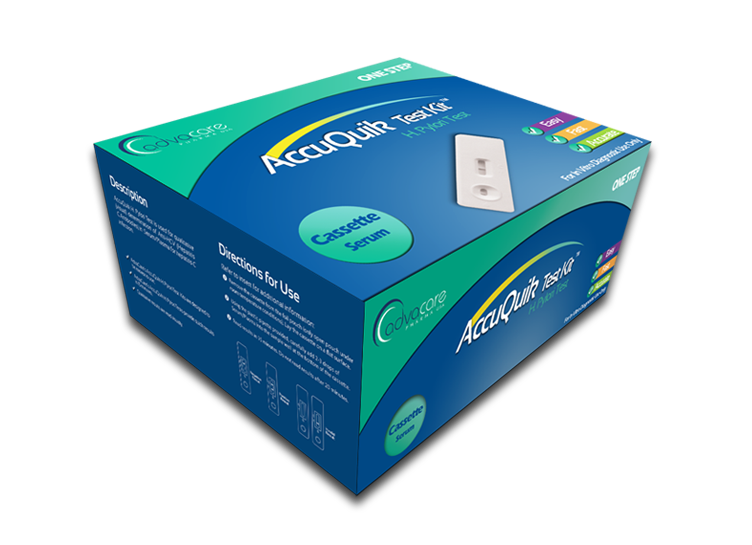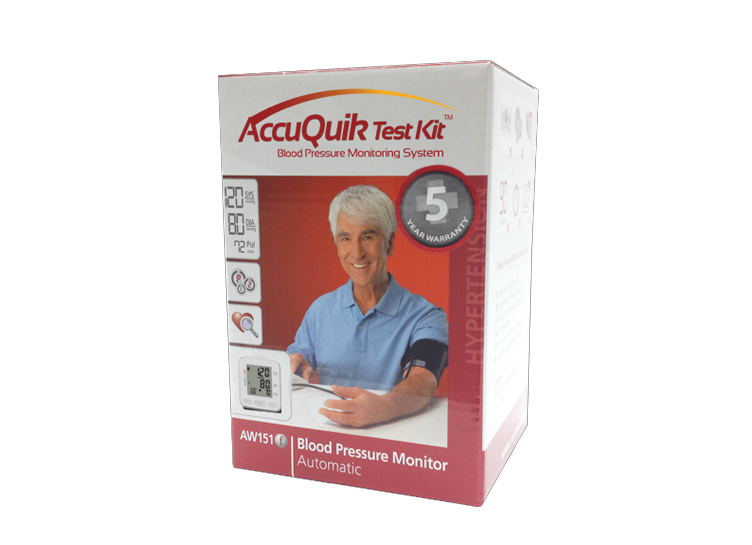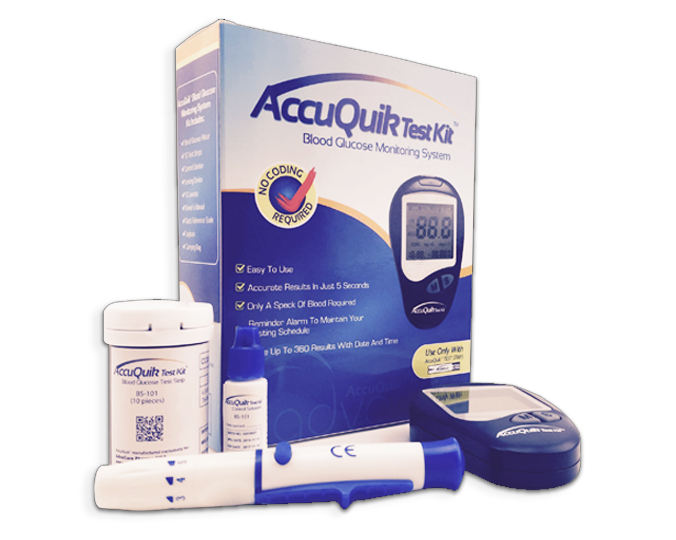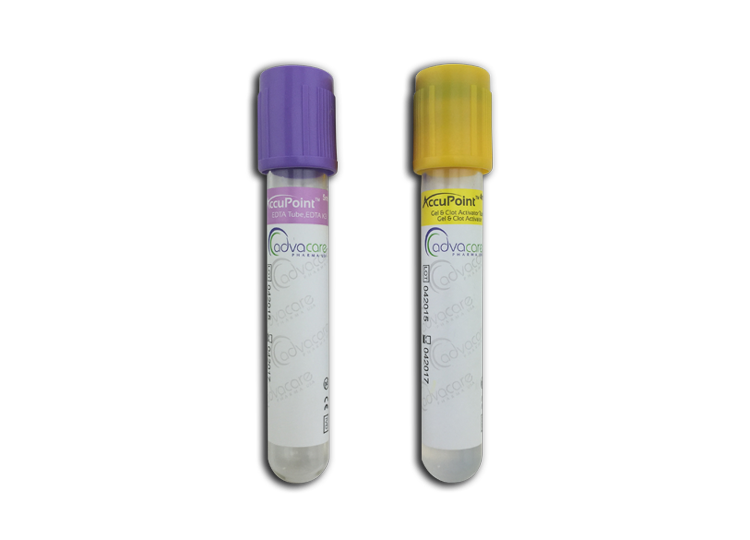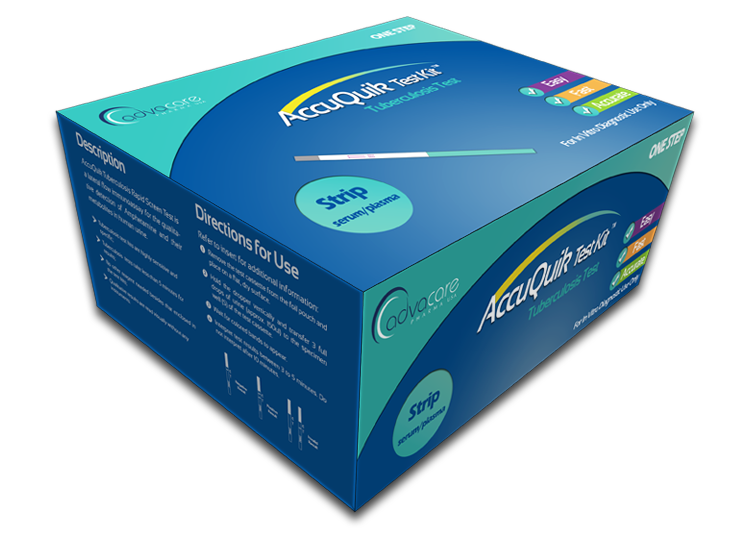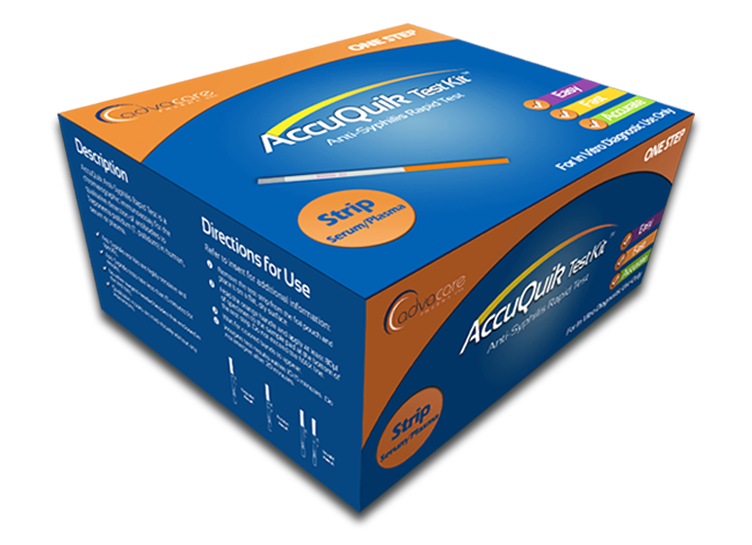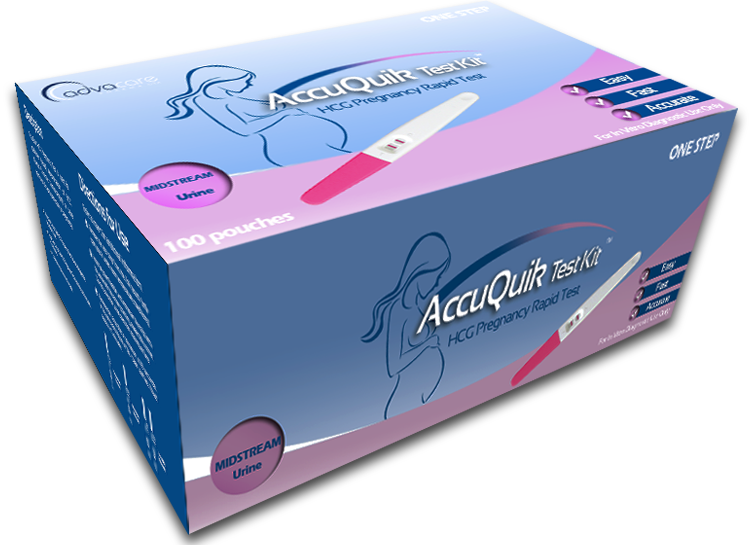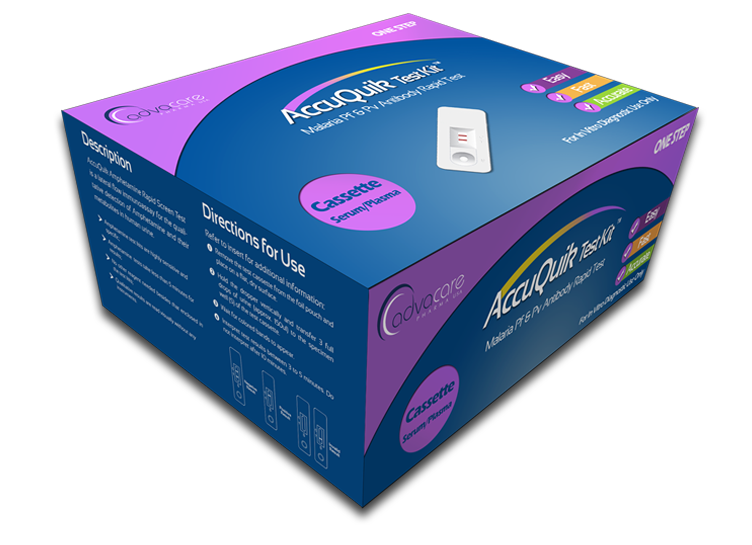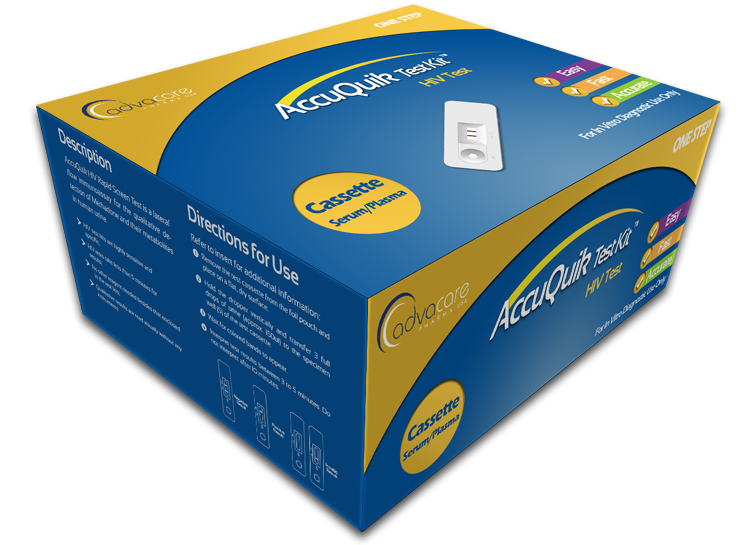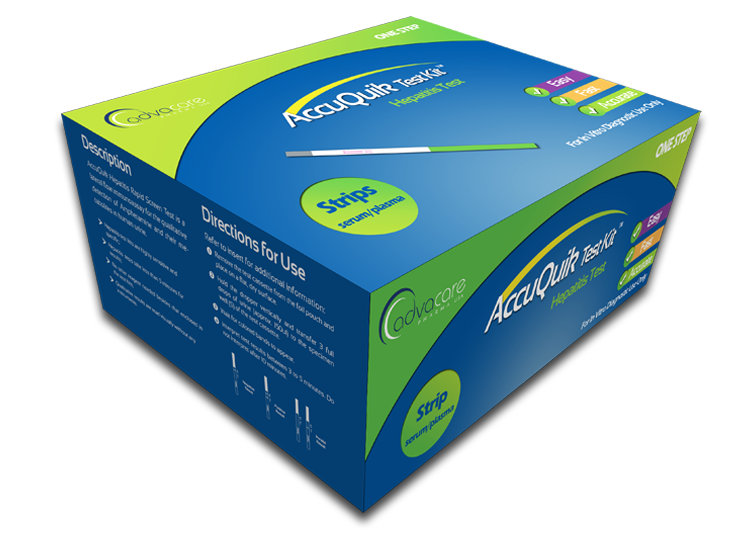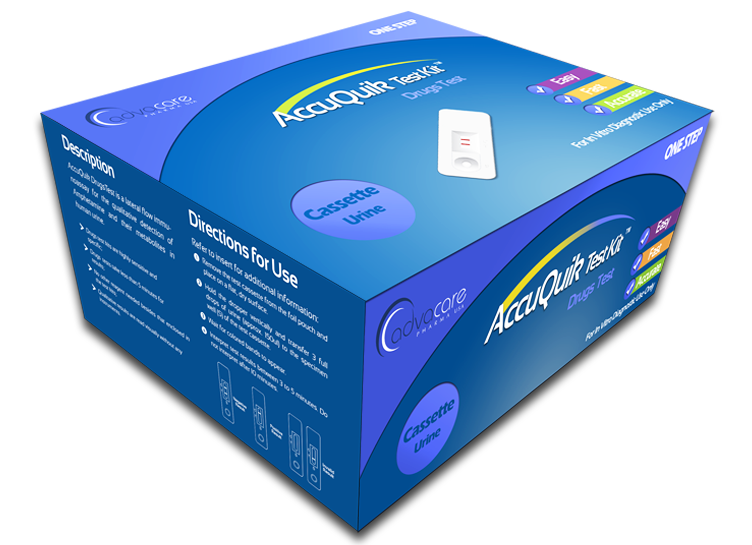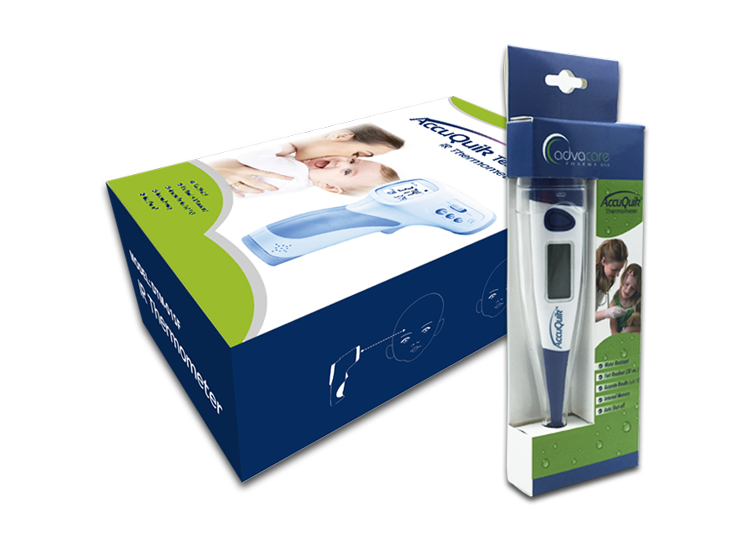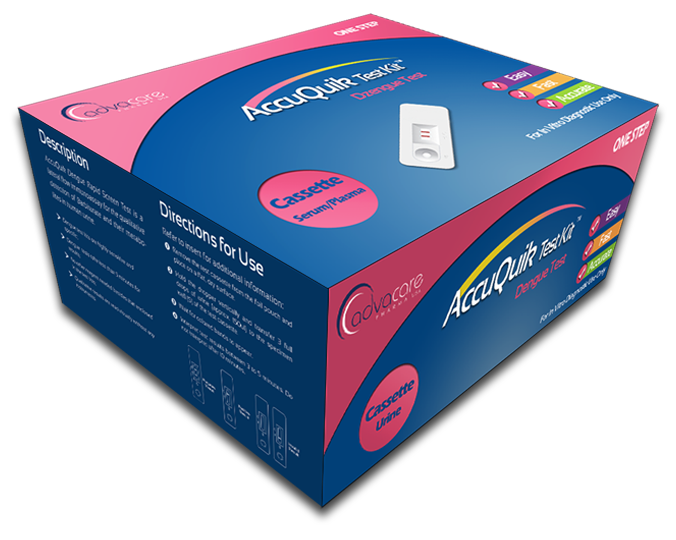More Information about the Carcinoembryonic Antigen Test Kit
AccuQuik™ promotes the use of Carcinoembryonic Antigen Rapid Test Kit.
How Does the Test Work?
Available as strip or cassette
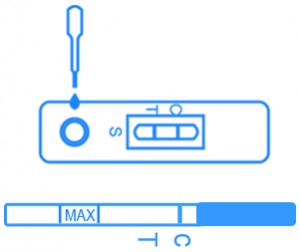
Carcinoembryonic Antigen Rapid Diagnostic Test detects Carcinoembryonic Antigen (CEA) protein in serum or plasma. The CEA is a protein produced during fetal development that decreases in level during adulthood. It is used as a tumor marker in adult ages as CEA levels rise in the presence of colorectal, gastric, lung, breast, pancreatic, or medullary thyroid carcinoma. It is primarily used in monitoring cancer treatments or in diagnosing carcinomas as an indicator of the amount or size of cancer as well as its stage. The test membrane is coated with anti-Carcinoembryonic antigen antibodies that reacts to the specimen. The reaction moves upward chromatographically by capillary action to react with the anti-CEA antibodies. Appearance of a colored line indicates a positive result, and negative when otherwise. The control line should always appear to show validity.
AccuQuik™ promotes the use of Carcinoembryonic Antigen Test Kit.
Carcinoembryonic Antigen
General Information
Carcinoembryonic antigen (CEA) is a protein that can be found at a higher level in the blood of people with a type of cancer or other diseases. The CEA is usually used as a marker for colorectal carcinoma and other types of cancer such as gastric, lung, breast, pancreatic, and medullary thyroid carcinoma. This marker is used to further learn about the patient’s cancer, whether to predict the growth or spread of cancer or to analyze how well or not the cancer treatment administered has been working. The test is not used to make a cancer diagnosis as levels of CEA might be affected by many other conditions or diseases.
The CEA Test
Once a patient is diagnosed with either colorectal, gastric, lung, breast, pancreatic, or medullary thyroid carcinoma; a CEA test can be administered to help the doctor plan and monitor the cancer treatment. A readable result can be obtained after 5 minutes of using the test kit and a sample of serum/plasma. Without the need of analyzers, the easily interpretable results are a timely and cost-effective method to monitor cancer patients. Tests can be administered after diagnosis to help determine the right treatment (chemotherapy, radiation, surgery, etc.) and during treatment to see how well the treatment is working. It can also be used after treatment to identify whether cancer has come back.

